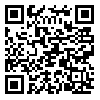Tue, Jul 1, 2025
[Archive]
Volume 1, Issue 1 (Winter 2015 -- 2015)
JCCNC 2015, 1(1): 47-55 |
Back to browse issues page
Download citation:
BibTeX | RIS | EndNote | Medlars | ProCite | Reference Manager | RefWorks
Send citation to:



BibTeX | RIS | EndNote | Medlars | ProCite | Reference Manager | RefWorks
Send citation to:
Seyedoshohadaee M, Hagnazarian S, Ashghali farahani M, Haghani H. Effect of Stabilizing Endotracheal Tube on Quality of Airway Management in Patients Hospitalized in ICU. JCCNC 2015; 1 (1) :47-55
URL: http://jccnc.iums.ac.ir/article-1-27-en.html
URL: http://jccnc.iums.ac.ir/article-1-27-en.html
1- Department of Medical-Surgical Nursing, School of Nursing and Midwifery, Iran University of Medical Science, Tehran, Iran.
2- Iran University of Medical Science
2- Iran University of Medical Science
Abstract: (3717 Views)
Background: The unplanned departure of endotracheal tube is one of the main complications for endotracheal intubation. In addition to endotracheal extubation, its movement can also lead to damage to the oral cavity. Stabilizing endotracheal tube is the most important factor that can prevent unplanned departure of endotracheal tube as well as its movement. The current study was done with the aim of determining and comparing the effect of stabilizing endotracheal tube by a holder with routine method on quality of airway care in patients hospitalized in ICU.
Methods: This study was a clinical and quasi-experimental trial with a control group which was done on 100 patients having endotracheal tube attached to mechanical ventilation by a holder. The samples were selected randomly from patients hospitalized in ICU in Hazrat Rasoul Akram hospital. The samples were then divided into control group and test group. At the end of the study, the homogeneous samples were selected and studied. The endotracheal tube was stabilized by a holder in test group and by a routine method (gauze) in control group. The quality of managing airway was studied through 3 frequency indices: endotracheal tube extubation, frequency of linear movement of endotracheal tube, damage to oral mucosa. For the first two indices a self-designed tool was used and a modified version of Oral Assessment guide was used for the oral trauma assessment. The data were analyzed using descriptive statistics, qui square test and independent t-test by SPSS version 17.
Results: The findings showed no significant statistical difference in frequency index of endotracheal extubation. Linear movement of endotracheal tube was lower in test group compared to control group. There was no significant difference regarding oral trauma in both groups. A difference was observed in both groups in comparing scores before and after using two methods in “lips” and “Gingiva”.
Conclusion: According to the results of this study, it was indicated that using ETT holder for stabilizing endotracheal tube compared to routine method only has preference in movement of endotracheal tube on quality of airway management. While applying methods of stabilizing endotracheal tube, it should be noted that not only type of stabilizing, but also other nursing cares from patients in ICU can affect quality of airway management. Therefore, it is recommended to do further studies on other factors inflencing airway management.
Type of Study: Research |
Subject:
General
Received: 2014/08/15 | Accepted: 2014/11/13 | Published: 2015/02/1
Received: 2014/08/15 | Accepted: 2014/11/13 | Published: 2015/02/1
| Rights and permissions | |
 |
This work is licensed under a Creative Commons Attribution-NonCommercial 4.0 International License. |





